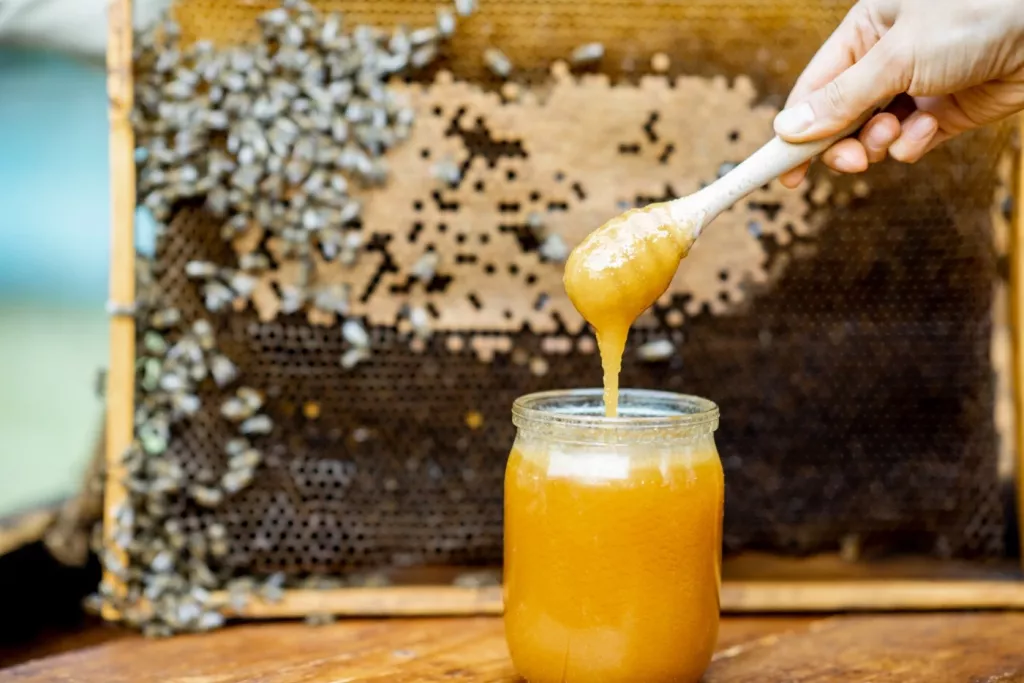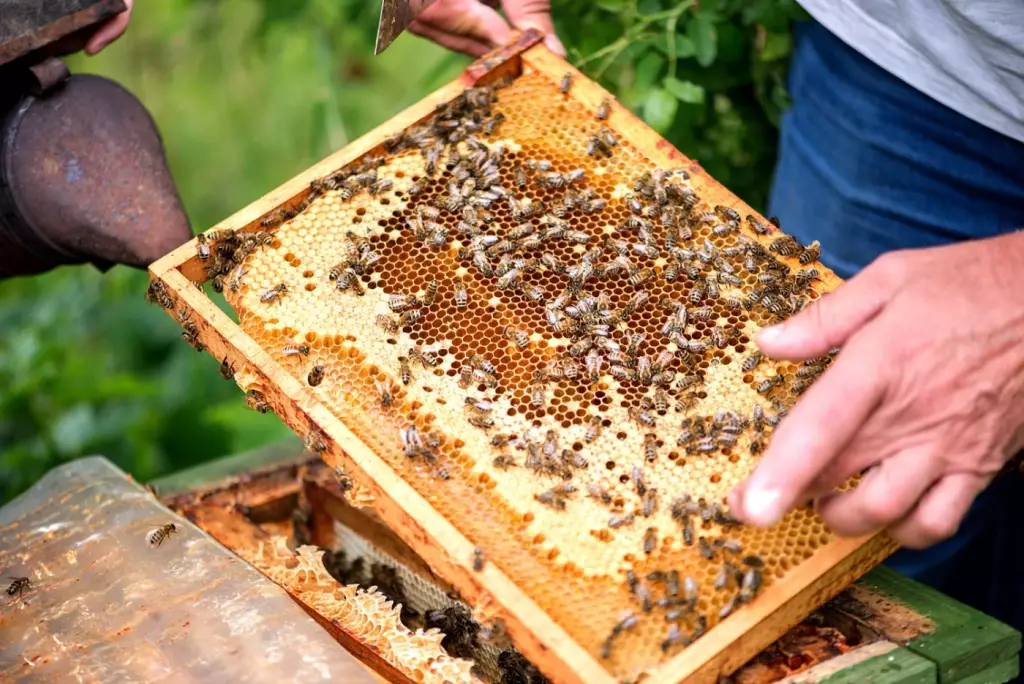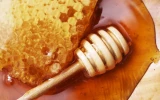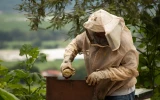Can You Harvest Honey in October?
According to professional beekeepers, collecting honey requires the right timing and that’s usually July to mid-September. But what if you missed the harvest window? Can you harvest honey in October?
You can still harvest honey in October, although extracting it is more difficult and it won’t be at peak quality. Just remember to leave enough honey for your bees to survive in the cold months and they should be fine.
When the winter season comes, honey will harden and will no longer be possible to remove from the honeycomb. There’s also a chance the bees may move the honey into deeper crevices of the hive, making it even more difficult to collect. So it is preferable to harvest early rather than too late.
Summary
- October harvests are possible but harder to collect
- The best time to harvest honey is from July to mid-September
- Leave at least 10 deep frames full of honey for your bees to survive during the winter
- If honey isn’t collected every year, the colony will outgrow their beehive
- To get the maximum honey output, you can wait until the final honey flow is over

Signs When Honey is Ready
Honey is customarily harvested during the summer to early fall. In September, National Honey Month is celebrated in the United States. It’s to promote American beekeeping and the beekeeping industry and signal beekeepers that it’s the right time to harvest honey from their beehives.
Honey is ready a lot sooner in colder climates than it is in warmer ones. On the other hand, bees produce honey all year long in warm climates. An easier way to tell if the honey is ready to be harvested is to inspect the hive.
Here are the signs that your honey is ready for harvesting:

Capped honey combs
Capped honeycombs are the most well-known sign that the honeycomb is full. The surface has a white and waxy texture, much like a seal after the jar is full. Once the frame has at least 80% of capped honeycombs, then that’s a good sign you can safely harvest the honey.
You can also harvest uncapped honey although it’s more watery and more likely to ferment quicker inside stored containers. They’re also safe to eat and one way to check if they’re okay to harvest is to gently shake the frame if it drips then it’s not ready for harvest but if it sticks, then it’s okay to harvest it.
Honey flows
Nothing makes beekeepers happier than hearing the frenzied activity of buzzing bees flowing in and out of their hive. This intensive foraging behaviour coupled with favourable weather conditions usually means there’s an abundant source of nectar nearby and more honey is made when nectar flows.
The process can take a while but you’ll be able to reap the maximum honey harvest. In some cases, it’s possible for bees to produce five lbs of honey in a day!
Harvest window
Although there is no set time or date when you can begin gathering honey, many seasoned beekeepers find July to mid-September is the optimal time to do so. It is the sweet spot when the weather is still warm and the beehives are loaded with sweet honey.
To reap a bigger honey harvest, you can either be patient and wait until the last honey flow is finished or you can start gathering honey as soon as 80% of the honeycombs are capped.

How Much Honey Should You Leave Behind?
It’s important to leave a good portion of honey behind so your bees won’t starve during the winter.
If you live in an area that gets below-freezing temperatures during winter, then it is recommended to leave at least two hive bodies deep full of honey. But if you live in warmer climates, then it’s okay to leave one hive body but to play it safe leave at least two hive bodies behind.
In terms of frames, the recommended number is to leave about 10 deep frames of honey behind. That much comes to around 200 lbs of honey, enough for colonies to survive in most climates. When beekeepers take too much honey, the bees end up dying because there isn’t enough food supply for the entire beehive.
Even when your beehive is healthy and doing well, it’s better to err on the side of caution and extract less honey.
What Happens When Honey Isn’t Harvested?
If honey isn’t collected, the colony will quickly multiply and outgrow its hive. The colony eats the honey during the cold months and whatever is left behind after winter is built upon until the next season. Then one of two things can happen. Either they find a bigger hive or stay and start storing honey in the combs that they usually use to raise young bees.
If the latter occurs, there is a chance that the bee population will decline. With no space to raise young bees, there is no new bees to replace the existing worker bees and the colony will eventually die off.
The excess honey will also attract other insects such as ants and other bees from another colony. They will feed on the honey if they have access to it which may lead to an unwanted infestation.
As a beekeeper, you have three choices:
- add more brood boxes
- let the colony swarm
- split the colony
Add more boxes
You can add a second brood box so the colony has more space for their increased population. Bees are programmed to make honey. As long as there’s enough space in their beehive, they will continue to make more honey than the amount they will consume during winter.
A strong sign that the beehive is overcrowding is when they’re densely packed into the frames and seem to hardly have any room to move.
Natural swarming
If they’ve run out of space and the queen has no place to lay her eggs, they will instinctively swarm to continue their survival. The queen will take two-thirds of the colony to build a new beehive elsewhere while the remaining worker bees raise a new queen. This results in the bee’s genes being diving and spread out through a new population.
Splitting the colony
An easy method to divide an overcrowded colony is the walk-away split. It’s similar to swarming but instead of letting the bees decide where to build a new hive, you have control over that aspect. It’s a quick process of transferring the queen to a new hive which prompts the queenless colony to produce a new queen.
However, it’s vital that both hives should be strong enough to prepare for overwintering. A weak bee population in both hives could spell disaster. It’s best to split the colony early in the season. This gives them plenty of time to prepare for winter and with luck, you’ll be able to double your hive numbers by next spring.
In Conclusion
Bees have a natural instinct to produce honey and when the cold seasons come, they take shelter inside the hives to keep themselves warm and eat the stored honey. While harvesting honey in October is still possible, it’s better to do it in September.
To veteran beekeepers, early fall is the perfect sweet spot for collecting honey. The warm weather keeps the honey soft and easier to collect while reaping the maximum honey output.
The more honey that’s stored, the better your harvest will be by the end of early fall.

